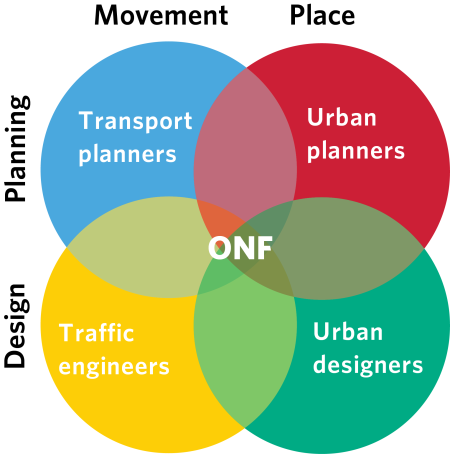All RCAs are expected to have a current ONF classification in place already. This base information will work as a key input into any future network classifications and assist with highlighting any operational gaps for delivery to achieve strategic objectives.
Movement and place classifications should reflect how the network is intended to operate today.
The ‘movement’ emphasis has shifted from a focus on the volume of vehicles to the functional importance for moving people and goods, by any mode.
There may be a disconnect between the planned function of the network, and how it is used currently. This disconnect may trigger changes to how its operated, or its design, so it can re-align with its intended function.
An example is ‘rat-run’ routes where streets intended to function as local streets are used as commuter routes. While operating as a connector, the intended function is still a local street, and this is how it should be considered.
The One Network Framework provides a common language for all practitioners involved in transport system and land-use planning and design.

Collaboration quadrant